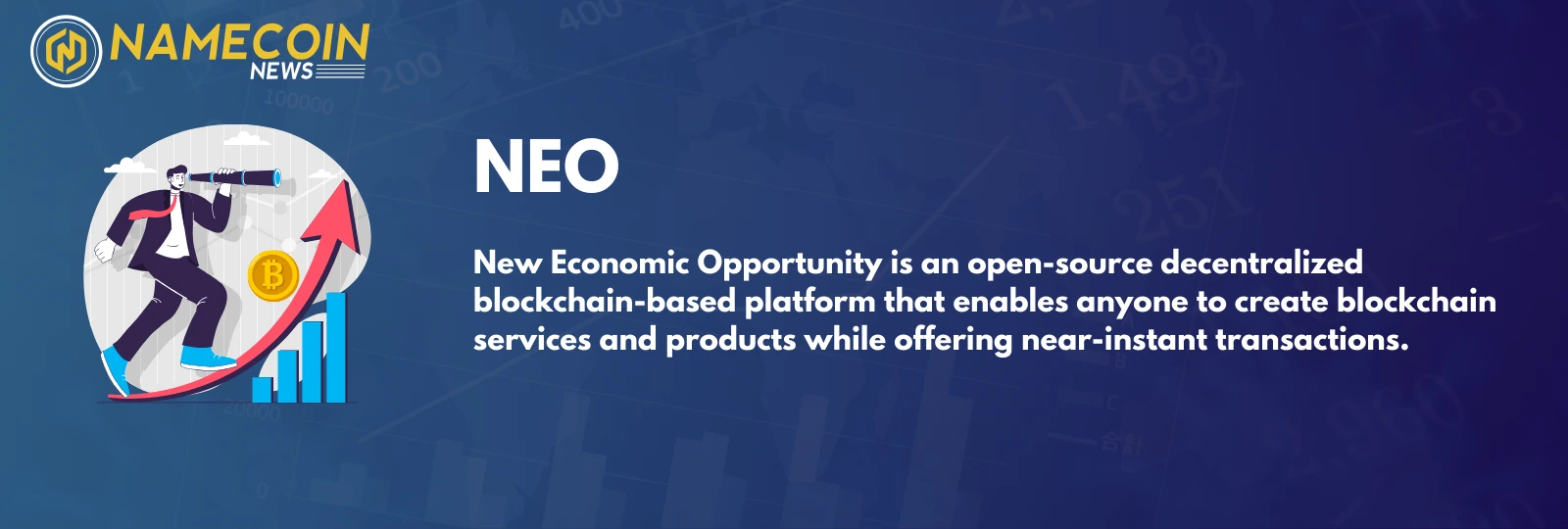NEO is another name for New Economic Opportunity, a decentralized blockchain force that is changing the face of the digital economy. As the “Ethereum of China,” NEO allows developers to develop and create blockchain applications and services on an open-source ecosystem for smart contracts, tokenized assets, and dApps. With near-instant transactions, this blockchain system boasts a unique dual-token system, and attention is already coming from global markets.
This guide looks into the NEO full form, its features, how it works, and why it is becoming the favorite platform for blockchain development.
What is NEO?
NEO stands for New Economic Opportunity, a blockchain project that enables the development of decentralized applications and digital assets. It is suited to build the “smart economy” with digital assets, digital identity, and smart contracts inside its ecosystem.
NEO is unique in its ability to support multiple programming languages such as C#, Python, and Java, which makes it approachable for a larger number of developers. Their blockchain platform utilizes a consensus mechanism called Delegated Byzantine Fault Tolerance (dBFT), which offers rapid transaction time and security at the same time, without sacrificing on decentralization.
Key Features of NEO:
- Open-source dApp development framework.
- dBFT transfers within nearly a second.
- Dual token system: NEO for governance and GAS for fees.
- Smart contracts that implement automated, secure transaction processing.
How Does NEO Work?
NEO is a smart contract platform. Its open-source blockchain allows developers to create and deploy decentralised applications, dApps. Here’s how it works:
- Dual-Token System:
-
- NEO: It facilitates governance and voting of network changes.
- GAS: The main use cases of it are to pay for transaction fees and deploying smart contracts.
- Consensus Mechanism (dBFT): NEO uses dBFT-a consensus mechanism much faster and energy efficient compared to the traditional Proof-of-Work mechanism besides choosing validators to authorize transactions thus granting almost instant finality.
- Smart Contract: Smart contracts can be programmed using well-known programming languages, which makes blockchain technology easily integrated with existing ones.
- Digital Identity: NEO implements digital identity so that compliance and security are not an issue. That’s why it is always the first choice when applied at an enterprise level.
Why Choose NEO?
NEO has several enticing grounds for developers, enterprises, and investors in taking up its platform:
- Developer-Friendly: Supports multiple programming languages, making it easier for developers to begin their work.
- High Transaction Speed: Processes up to 1,000 transactions per second (TPS), and is theoretically capable of growing this number to 10,000 TPS.
- Eco-Friendly: Utilizes dBFT, which uses far less energy than PoW systems.
- Compliance-Ready: Inbuilt digital identity enables regulatory compliance
- Dual Token System: Functions split between governance and utility, providing a superior economic model.
Pros and Cons of NEO
Pros
- Scalability: High transaction throughput supports large-scale applications.
- Global Adoption: Strong presence in Asia and growing worldwide.
- Secure Consensus: dBFT provides network security and reliability.
- Developer Accessibility: Multi-language support attracts a varied developer community.
Cons
- Regulatory Concerns: This blockchain, being of Chinese origin, is scrutinized in some jurisdictions.
- Centralization Concerns: dBFT uses selected validators; in the worst-case scenario, this would cut down on decentralization.
- Competition: There is significant competition from similar platforms, such as Ethereum and Solana.
History of NEO
NEO was launched in 2014 by Da Hongfei and Erik Zhang under the name Antshares before getting rebranded to NEO in 2017. It is often referred to as the “Ethereum of China” due to similarities in its focus on smart contracts and decentralized applications.
The major milestones in the history of NEO are the following:
- 2014: Launched as China’s first blockchain under the name Antshares.
- 2017: Rebranded to NEO and coined the term “smart economy.”
- 2018: Launched NEO 2.0, which was cross-platform friendly.
- 2021: Released NEO 3.0, with enhanced performance and features.
NEO’s partnerships with enterprises and governments further solidify its position as a leading blockchain platform.
Key Components of NEO
- Smart Economy: Integrates digital assets, digital identity, and smart contracts.
- NEO Tokens: Governance tokens for network voting.
- GAS Tokens: Used for network transactions and smart contract deployment.
- dBFT Consensus: Ensures secure and fast transactions.
- Interoperability: Supports cross-chain integration for seamless asset transfers.
Benefits and Features of NEO
- Eco-Friendly Transactions: It consumes less energy compared to traditional blockchains.
- Global Developer Community: Open-source code promotes innovation.
- Enterprise-Friendly: Digital identity and compliance features provide a suitable structure for businesses.
- Scalability: It operates well with a large amount of transactions.
- Token Rewards: Generating GAS tokens is a reward for staking NEO tokens.
Conclusion
NEO, the New Economic Opportunity, has been one of the significant milestones in the space of blockchain. NEO’s developer-friendly environment, its eco-conscious consensus mechanism, and robust smart contract capabilities clearly make it at the forefront of decentralized applications and services creation.
As the blockchain becomes increasingly adopted, NEO is becoming a pretty attractive solution for businesses and developers in the USA and, more importantly, on a global scale. Whether it’s building on the platform or investing into its ecosystem, NEO’s innovative approach in developing the view of blockchain technology remains well-positioned in the future of the digital economy.

